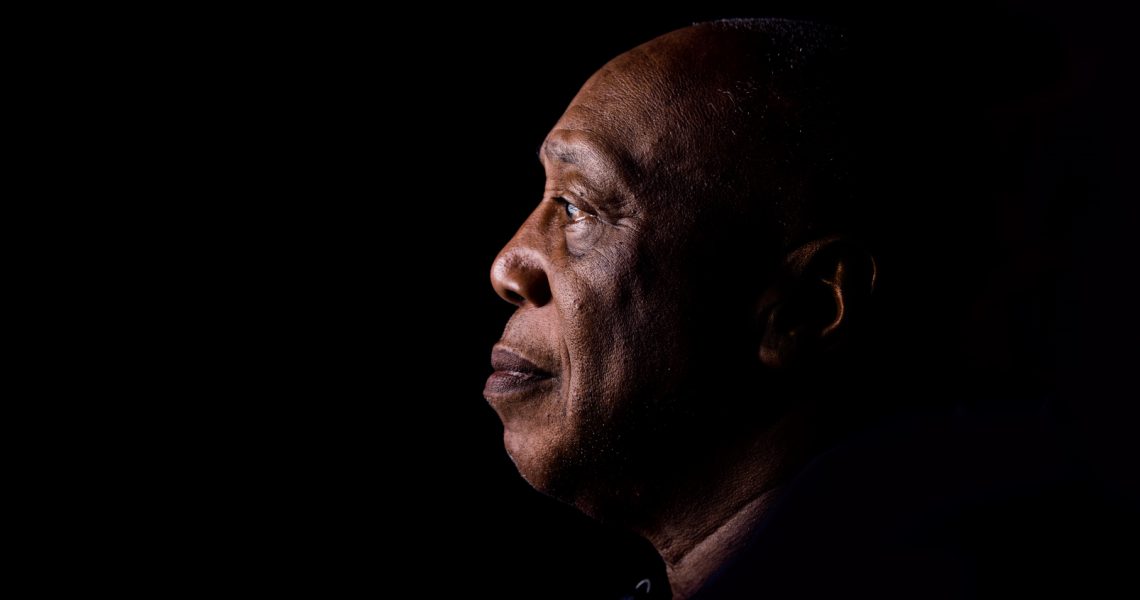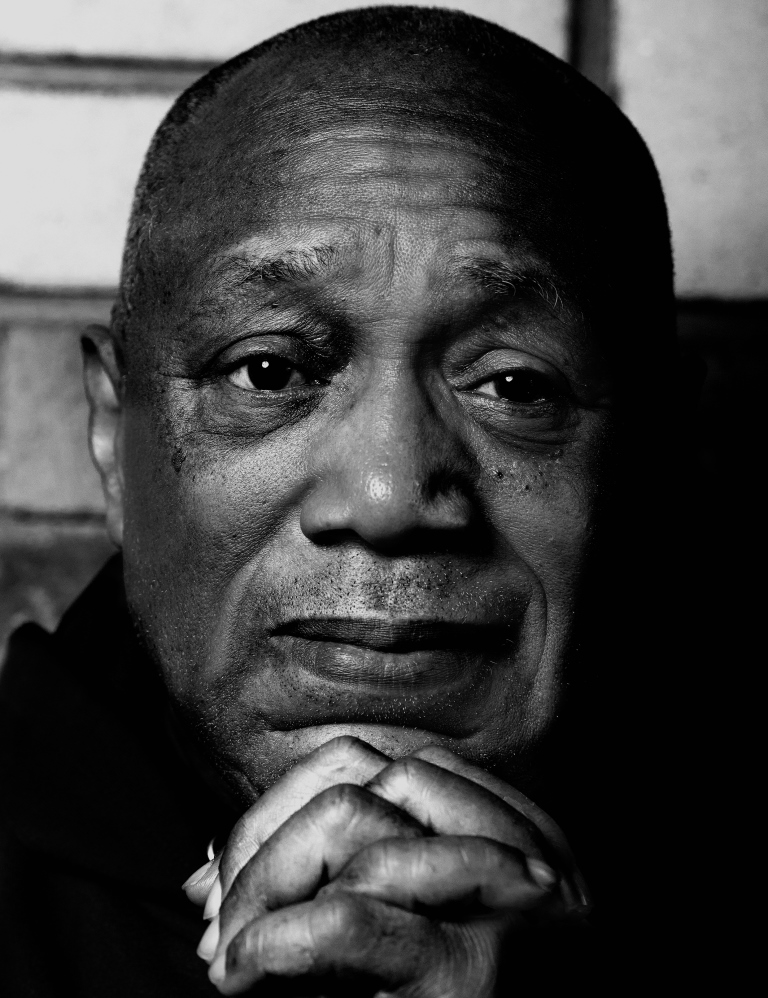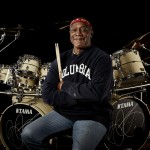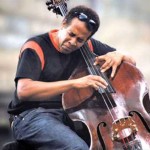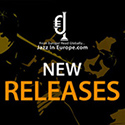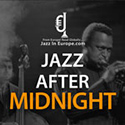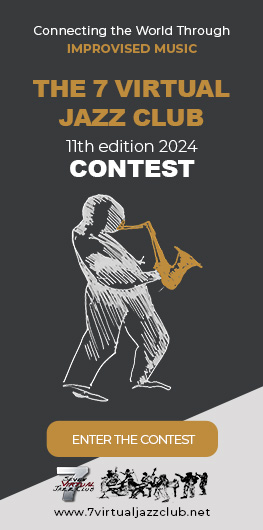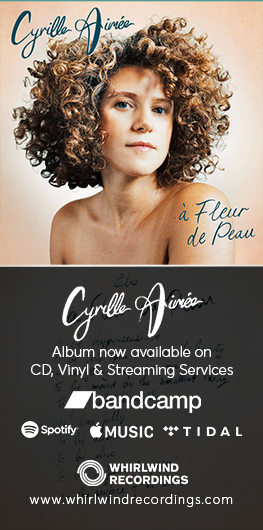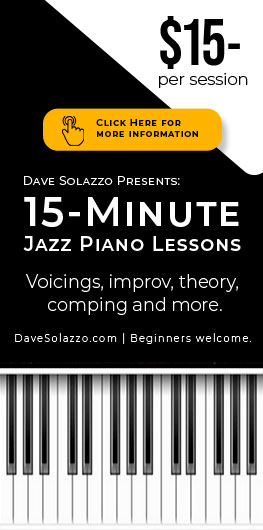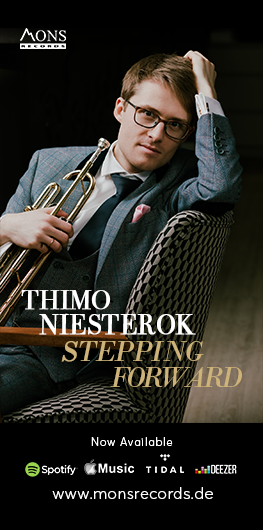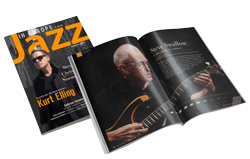Sarah Chaplin caught up with Billy Cobham just before he started a two-day residency at the Jazz Cafe in London, a part of a world tour with the Crosswinds Project that started in April and has encompassed dates in the USA, Europe, and finishes up this year in Kazakhstan.
Sarah Chaplin: With the launch of your Crosswinds Project, you said your aim was to revisit the material from that 1974 album with a new line-up and find some fresh twists. What has emerged as you’ve been touring with the band?
Billy Cobham: I’ve rearranged most of my charts and it’s sort of harking back to that time, but it’s also a whole other world to be playing these tunes again because music to me is a continual morphing of who I am in life. So I continue to change, for example sometimes I might do something I would have playing forty years ago but from a rhythmic standpoint, the tuning and tensioning of my drums – everything has changed – so you may hear something that sounds like what you heard back in the day, but it will definitely have a different vibe.
How we play all my original material is on the paper, it’s assigned to different instruments and then in and around that are little, small clouds where you can improvise. But primarily the improvisation is knitting together the fundamental musical presentation that I’ve written. It’s fusing jazz and rock together to create a certain personality, and that all started in 1967 with a record called ESP.
It’s a Billy Cobham musical presentation, so I’m responsible for every act pretty much, I’m the one who has to determine tempos, how I bring everyone to work with me depends on the patterns that I play and how clearly I make my intentions known rhythmically when I play. So I am in fact conducting the band from behind.
SC: When you formed this new line-up, did you consider including any of the material from your days with the Mahavishnu Orchestra?
BC: Well the reason I didn’t bring any of that music into play is because I didn’t write any of that material, although I did suggest that we put on a very special presentation of the music of the Mahavishnu Orchestra that ended up coming out with the Frankfurt Radio Jazz Orchestra in 2008 called Music of the Spirits. It was their idea to play that music and they wanted me to play the drums – at the time it was Gary Husband who was playing with them, and he suggested that rather him playing the music, that I should do it. At that point, when Gary asked me to do it, he said what would happen if you played this music the way you see it now, and that’s sort of hooked me. At first, I said no, and then I thought, that might be fun, and would I have another chance, so we did it. And then I took it one more step and I was working for Peter Gabriel on WOMADelaide, and I actually got those guys to support me to bring a collaboration together – where we played at the festival with 100 musicians – the LA Symphony Orchestra came over and we had 16 strings playing John McLaughlin’s guitar part, and I played with my band and it was a wonderful thing – a great way to actually present something that John had written with a full orchestra. It was so much fun and then I just put it away. But by then I was hooked, and I wanted my music to be created with a jazz orchestra, so then I brought out Broad Horizon, with the Frankfurt Radio Big Band, and since then I’ve recorded with other orchestras in Luxembourg and all over. In the process, it’s opened my mind to presenting my compositions with musicians whom I feel would be able to work with me to help me achieve the dream of presenting those ideas.
SC: Did you consider asking saxophonist Ernie Watts to re-join you on this tour?
BC: Yes, he’s a great musician and we go back to 1975, maybe even earlier, we’ve done things off and on together. But this Crosswinds project was different – it’s a mindset and Ernie’s not there with this music right now – with all due respect – he took a shot at it, and it didn’t work and I realised it was my fault, that I thought I could bring him back, go back in time expect him to do the same thing, but he’s in a different place. Hence, I had to come up with something a bit different, something really off the wall by getting a bassoonist to come and play. My objective was to get a double reed player to come in, and Paul Hanson’s adding a special dimension because he’s also playing with effects with the bassoon, it’s really very, very special.
SC: With the success of this tour, is there scope for you to go back now to other aspects of your earlier work, for instance, Glass Menagerie?
BC: Funny you should say that, because the bass player from Glass Menagerie, Tim Landers, is playing on the gig tonight, and that’s a funny story. It was weird – I met Tim out of the blue at LA College of Music, and he walked up to me and he said, Hi Bill, how are you doing? And I said, Who are you? And he said It’s Tim. Tim Landers? Get out of here! It was so funny – he was there doing some teaching. I said Where did you go? Last time I saw him was around 1983. It was right around the time I went to LA, got married and had kids. I started working with a new bass player, we were making records, touring, as I did with Tim – it was what it was, Tim was just someplace else. And so much as gone on since then.
SC: How much has the work you do as a performer been influenced by your work as an educator?
BC: I started teaching straight out of high school. It started when I was in the US Naval Band and I rewrote the admissions test for percussionists. I just teach because it seems the natural thing to do. Listen, I know guys who go up to a pro (I’m not saying who) and say ‘I’d like to take a lesson with you’, and the pro will say, ‘Buy my record’. They’re not going to tell you anything until you buy their record. But for me, it’s about paying forward what I learned from the back side. So someone might come up and say to me, ‘Do you have time to give me a lesson’, and I say, sure. And they say, ‘When can you see me?’, and I say, you’re seeing me right now. What do you wanna learn? It’s a gamble that I hope that I lose, but 99.9% of the time it’s in one ear and out the next. Even if it gets in the ear first. It’s happened millions of times. I say, which way do you wanna play? It’s not how you hold the sticks but how you implement the patterns to get the sounds that you want. Play with time, keep the tempo with your feet. If you’ve got a metronome, throw it out, because you’re born with a clock. It’s like if you have to get up in the morning for an important meeting, you often find you’ve woken up at exactly the right time without the alarm going off. Lo and behold, you’re on time, and it continues to happen. That’s your metronome, and when you start to get that that’s in your head controlling your body, and you start playing the rudiments, it’s all there. You can switch from duple time to triplets with ease, you can accent the triplets and you start to think about phrasing, synchronisation, all of that, based on your own body clock. You’re basically multi-tasking and thinking where do I go from here, what’s coming up next already? Especially if you’re sight-reading. And you learn these little tricks, like scanning the chart for tempo, phrases, so you know where it’s going – you get the lay of the musical land, and you go from there.
SC: With all the touring, what’s been happening with your Art of the Rhythm Section retreat?
BC: What’s been interesting this year because the sponsor asked me to extend it so we now have a second retreat taking place in Indiana on the other side of the Mississippi. It’s mainly for pros and music teachers, and more than anything they’re studying how to teach their students better and how to be more sensitive to their colleagues on the bandstand. I’m interested in helping them sustain the loop of musical intensity and integrity. So it’s more than just learning to listen to each other better, it’s a two-way process – how you hear and then how you respond.
SC: Can you tell us briefly, how did the Drum’n’Voice idea come about?
BC: Why that’s so unique is because the people who promoted the very first Art of Three, Novocento, said we’ll do it if you do us a favour. I asked what that would be and they wanted me to come and play some patterns – they said, just play what you feel, and we’re gonna just take these patterns and we’ll show you what we’ve done with them to get your OK – they would just sample the patterns and put people around it.
SC: Your Best of Billy Cobham album came out 40 years ago – usually, that happens at the culmination of someone’s career, but you’ve gone on another 40 years doing amazing stuff. What is it that gets you out of bed in the morning and stay fresh with what you do?
BC: People like you, people that inspire me, it’s the same way I write a lot of the material. In the last part of my Art of the Rhythm Section retreat this year I had Kenny Barron and Ron Carter come along, and we don’t often get to play together. So when we do it’s always fun, because we love to do it, but we’re on different planets all the time, and in the jazz environment it’s always that way – you’re kind of an eccentric maverick. So when I called up Kenny Barron who’s in Montevideo and Ron Carter’s in Naples and we get together at short notice for a couple of days in the studio, it’s magic. We created The Art of Three – the art of the trio – Kenny made a list of 150 tunes on his way up from Montevideo and off the back of that we ended up playing four concerts – Naples, Oslo, La Spezia and one in Denmark, and we never played the same tune twice. On stage, one of us would just say, Where do we go now? What key? And one of us would start playing, and wherever we went was correct. It was mentally super meditative – that was in 1999, maybe 2000. I then engineered a full concert tour of Europe based only on that, 20 something shows, and then we went to Japan after that. For me it was a wake-up call – I thought, this is do-able and I need to harvest this somehow as best I can. But it can’t happen every day, so the next time it’s like 18 years later, and the three of us just got back together again this summer to talk about how it works, as a Town Meeting at the retreat. It was fantastic!
Artist website: Billy Cobham
Writer: Sarah Chaplin
Photo credits: (twitter @Mspictures2 & Instagram: Mspictures.Mochles )
Last modified: April 25, 2020


